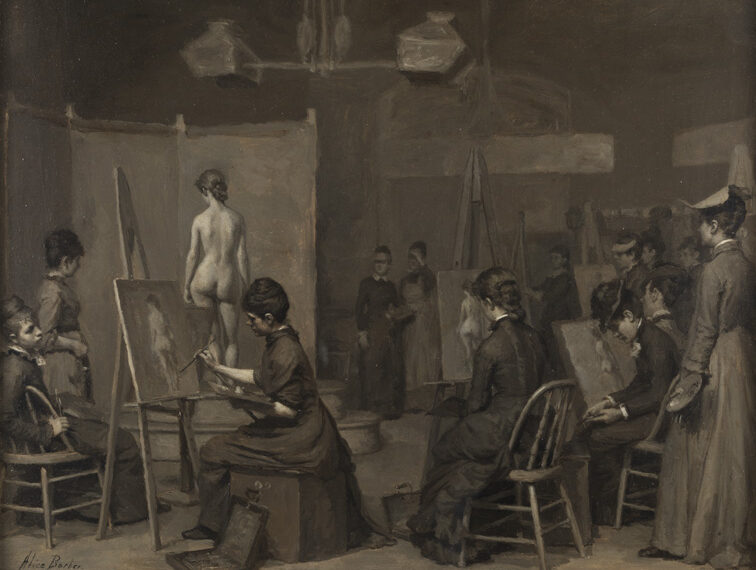What Were the Academies?
Before the 17th century, if someone wanted to be an artist, they would enter a workshop to learn the craft—this was the guild system. Once they learned everything they needed, artists moved on and established their own workshop to receive commissions and train apprentices. However, in the 17th century, academies spread throughout Europe to unify artistic education. In these new schools, every student followed the same curriculum as their peers and learned from the same teachers. This way, painting and sculpture acquired the coveted title of “liberal” (intellectual) arts. Artists were now considered professional, learned men, above artisans. Even though the guilds survived for decades, the Academies grew in importance across Europe.
No Women in Art Academies
This new status of painters and sculptors excluded women, who were considered intellectually inferior to men. Part of the reasoning was a supposed care for their reputation; the academies put great emphasis on drawing from life, which meant lessons with naked models. It would have been terrible, socially, for women students to remain in the presence of such a scene. But, if they did not know anatomy, they could not paint realistic human figures. Thus, they could not create history paintings (mythological, religious, historic scenes), the highest-regarded genre. It was a vicious cycle that kept women away from critical acclaim. Most of them could only focus on genre scenes, landscapes, still life, and portraits if they were lucky. In the eyes of the Academy, those were lesser and “easier” genres.
Regardless, some women artists managed to enter the academies and have successful careers.
Italy
Italian art academies from the Renaissance served as models for the later ones. Since Italy was not yet unified, several city-states established these schools independently. Florence had the Accademia delle Arti del Disegno since 1562. In 1583, Rome established the Accademia di San Luca. In 1607, it allowed women to become members, but restrictions to the classes and meetings remained. Therefore, women relied on male relatives or family friends to teach them and cultivate their skills before proving their talent to the academicians. Artemisia Gentileschi (1593-1653) got into the Florentine academy in 1616.
Similarly, Bologna built an academy at the beginning of the 18th century, also with restrictions on women. In consequence, Elisabetta Sirani (1638-1665) established her own independent academy where she taught women students.
The Royal Academy in France
The first great academy was the Académie royale de peinture et de sculpture (Royal Academy of Painting and Sculpture) in Paris, France, established in 1648. Technically, it did not prohibit admission to women, but its requirements did not give them many opportunities. Every aspiring student had to present a piece to prove their talents. This meant applicants already needed a degree of education that most women did not have access to, especially anatomical knowledge. In total, only 14 women studied at the Royal Academy from 1663 to 1793. They are now remembered as some of the most famous female artists.
After the Revolution, the new government replaced the Royal Academy with the École des Beaux-Arts (School of Fine Arts). This one did not admit women until 1897. Other smaller, more local schools like the Académie de Julian admitted women. However, the tuition was more expensive than that of men and with a limited curriculum.

